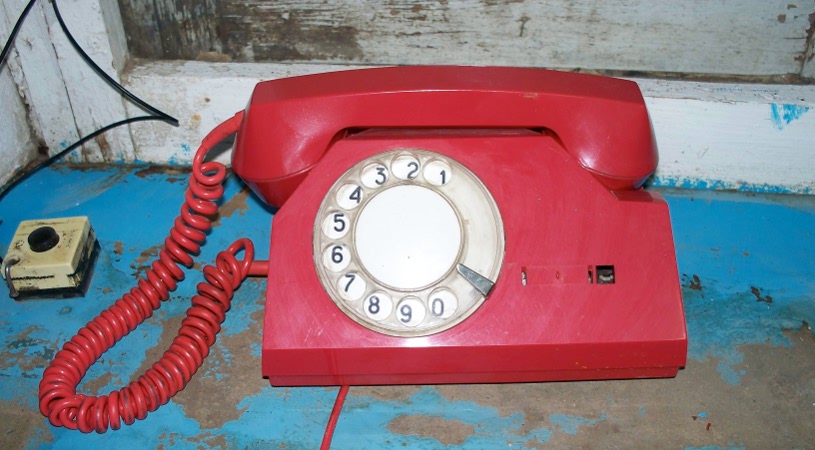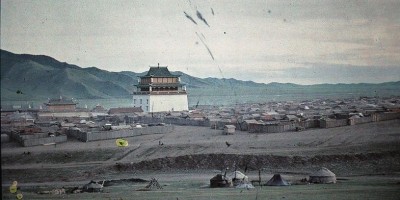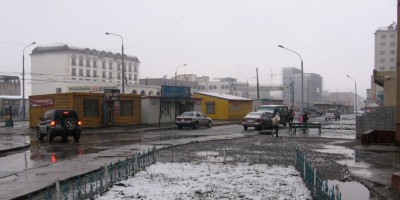Education in Mongolia is not all doom and gloom, and it is important to recognize its many successes. At the national level, Mongolia boasts one of the highest literacy rates in the world at 96 percent 1, has a robust kindergarten, primary, and secondary school system, and saw a whopping 60% increase in tertiary enrollment between 2000 and 20062-a trend that continues to strengthen each year. On the local level, every school can boast about its successes in sports, academics, and arts, as well as celebrate their hardworking and dedicated teachers.
The school that I work at is fairly average in terms of population, class options, resources, and quality of teachers. Some of the teachers are truly inspiring and others, well, others make you wonder what you would actually have to do around here in order to get fired. For example, about a month ago the other foreign language teacher at my school went to Ulaanbaatar for a 2 week training. Not only did he fail to tell me that he was leaving, but he did not leave any lesson plans and locked away one class’s English notebooks so they were unable to access them to do their work. When he returned, he didn’t bother to ask me how the classes were or what we covered. Needless to say, he is not a teacher that I aspire to emulate.
But there are others in my school who defy their situations and find ways to turn sows’ ears into silk purses everyday. As that idiom suggests, these teachers take difficult environments and poor quality materials and produce high quality outcomes. There is a 3rd grade teacher who has been teaching for 35 years. She is the first at school every morning and one of the last to leave in the evening, and she spends her free time seeking out additional funding opportunities to purchase classroom supplies. There is a math teacher who I have seen over the past decade transform from someone unable to speak above a whisper when in front of a group, to a woman whose command of a classroom and creative explanations of math problems causes students to literally jump out of their seats in the hope of answering a question. And, there is a Mongolian language teacher who started teaching at the age of 16, and even though she is now retired, continues to tutor and help students with tricky Mongolian script questions.
Teachers in the Mongolian system are like teachers I encountered in my own public education in the United States–a diverse and mixed bag. Some are bad, many are adequately good, and a few inspire students so much that they change the trajectory of the students’ lives.
In my opinion, if Mongolia wants to increase its number of exceptional teachers, it needs to work more on developing a system that encourages mentoring relationships, especially between teachers with proven track records and those just starting out in their careers. One of the expectations from my school’s leadership is that teachers work together across disciplines on special projects both in and out of the classroom, but I have yet to observe any practical initiatives aimed at facilitating collaboration in practice. For a young teacher it can be a scary prospect to approach a more experienced teacher for assistance, and even if the older teacher is willing to help, she may not know how to offer useful guidance.
For the new chemistry teacher who struggles every day with classroom control, working with a more experienced teacher now would make her current and future teaching years more successful and enjoyable. Unfortunately, until there are more formalized and robust mentoring or on-the-job teaching training programs in Mongolia, only the most naturally outgoing new teachers will actually seek out and receive this much needed guidance.
As the Mongolian education system moves forward it should take greater advantage of the experienced and knowledgeable teachers already within its system. As the Mongolian proverb says “Aйлаас эрэхээр авдраа уудал” which literally translated means “Instead of searching from your neighbor, look in your own [storage] chest.” The implication is that the thing you are looking for you may already possess.
About the author
Sadie Munson currently lives and works in Umnugobi Province as an English teacher. She holds a bachelors degree from the University of Montana and a Masters of Human Ecology from the University of Wisconsin. Her professional interests and experiences include primary and secondary education, child development and family education, and community development. She can be reached at sarahmunson@gmail.com
Footnotes
1. Figure from 2009, http://data.worldbank.org/indicator/SE.ADT.1524.LT.ZS.
2. See http://www.ihep.org/assets/files/publications/a-f/(issue_brief)_educational_policies_for_integrating_college_competencies_and_workforce_needs.pdf.



